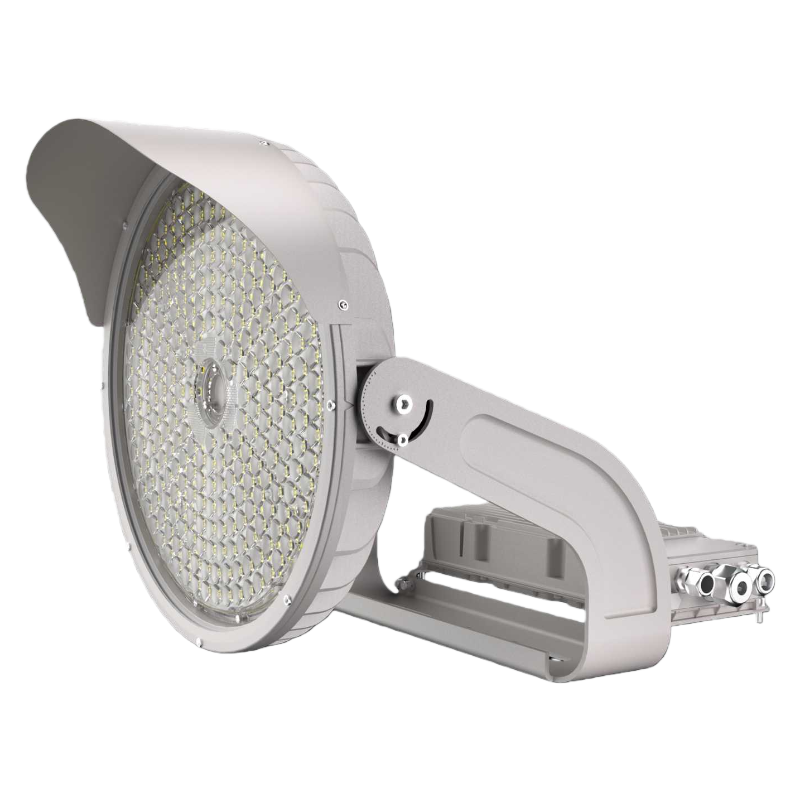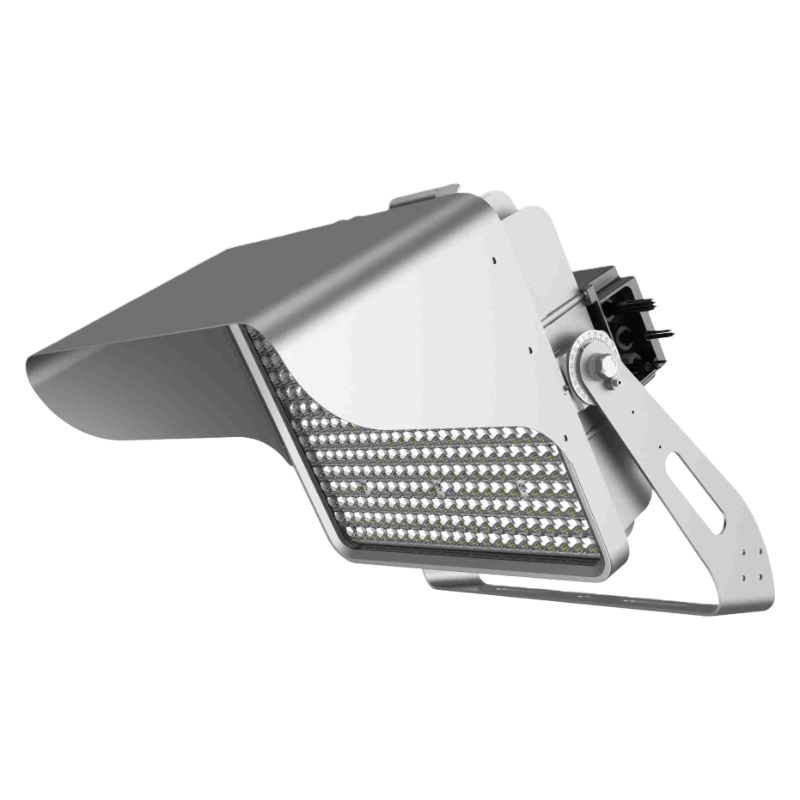LED Area (street) Light's energy-saving advantages and disadvantages
LED area (street) lights have become the dominant technology for outdoor illumination, primarily due to their significant energy-saving advantages. However, like any technology, they also present certain challenges, particularly concerning their energy profile. As of mid-2025, here's a comprehensive look at their energy-saving advantages and disadvantages:
Energy-Saving Advantages of LED Area (Street) Lights
The core appeal of LED street lights lies in their remarkable energy efficiency, leading to substantial savings and environmental benefits.
-
Superior Luminous Efficacy (Lumens per Watt):
-
Advantage: LEDs convert a much higher percentage of electrical energy into visible light compared to traditional High-Pressure Sodium (HPS) or Metal Halide (MH) lamps. While HPS lights convert a significant portion of energy into heat (often 70-80% wasted), LEDs are highly efficient, converting 80-90% of their energy into light.
-
Impact in 2025: Current LED technology can achieve over 140 lumens per watt (lm/W), and this efficiency continues to improve. This means a 100W LED street light can provide similar or even superior illumination to a 250W HPS lamp, resulting in energy savings of 50% to 70% immediately upon conversion. Cities routinely report these figures, with some achieving even higher savings through smart controls.
-
-
Directional Light Output:
-
Advantage: Unlike conventional bulbs that emit light in all directions, LEDs are inherently directional. This means that light is emitted where it's needed (down onto the street), minimizing wasted light that scatters upwards (sky-glow) or sideways.
-
Impact in 2025: This directional nature reduces the need for complex reflectors and diffusers that can trap light, further enhancing the overall system efficiency and ensuring more effective illumination with less energy. This design helps minimize light pollution.
-
-
Dimmability and Smart Control Integration:
-
Advantage: LEDs are easily dimmable without significant loss of efficiency or color shift, unlike traditional lamps. This allows for dynamic control of light levels.
-
Impact in 2025: This is a huge energy-saving feature. With the widespread adoption of smart city infrastructure, LED street lights can be integrated with central management systems, motion sensors, and ambient light sensors. This enables:
-
Adaptive Lighting: Automatically dimming lights during off-peak hours (e.g., late night to early morning) or when no traffic/pedestrians are detected. This can lead to an additional 20-50% energy savings on top of the base LED efficiency.
-
Daylight Harvesting: Automatically turning off or dimming lights when sufficient natural light is available.
-
Real-time Optimization: Adjusting light levels based on weather conditions or specific events, ensuring optimal illumination with minimal energy expenditure.
-
-
-
Longer Lifespan and Reduced Maintenance:
-
Advantage: While not a direct energy saving in terms of electricity consumption, the significantly longer lifespan of LEDs (50,000 to 100,000 hours, compared to 20,000-24,000 for HPS) drastically reduces the energy and carbon footprint associated with manufacturing and transportation of replacement lamps.
-
Impact in 2025: Fewer maintenance trips mean less fuel consumption by service vehicles and reduced labor hours, translating into substantial operational cost savings and a lower overall environmental impact for municipalities. This also means less energy is consumed in the manufacturing of new lamps.
-
-
Reduced Heat Emission:
-
Advantage: LEDs emit very little heat from the light-generating element itself, with most energy converted directly into light. In contrast, incandescent bulbs release 90% of their energy as heat.
-
Impact in 2025: While this is more impactful for indoor lighting (reducing HVAC loads), for street lights, it contributes to the longevity of the fixture's components (especially the driver) and can somewhat mitigate urban heat island effects, though the primary benefit is efficiency at the source.
-
-
Instant On/Off:
-
Advantage: LEDs provide instant full brightness upon activation, unlike traditional lamps that require a warm-up period.
-
Impact in 2025: This is important for integrating with motion sensors, allowing lights to be off until needed, thus saving energy. There's no energy wasted during "warm-up" cycles.
-
Energy-Saving Disadvantages of LED Area (Street) Lights
While the advantages heavily outweigh the disadvantages, there are a few considerations from an energy perspective:
-
Higher Initial Cost (Upfront Investment):
-
Disadvantage: The initial purchase and installation cost of LED street lights is generally higher than traditional HPS or MH lamps.
-
Energy-related aspect: While not directly about energy consumption, this upfront cost can be a barrier for municipalities, especially smaller ones, even though the long-term energy savings often lead to a rapid return on investment (ROI) within a few years. Securing funding for the initial capital outlay can be a challenge. However, this disadvantage is rapidly diminishing as LED prices continue to fall due to mass production and technological advancements.
-
-
Potential for "Over-Lighting" and Blue Light Emission:
-
Disadvantage: If not properly designed and controlled, the high efficacy and brighter, whiter light of some LEDs (especially those with high correlated color temperatures, e.g., 4000K-5000K) can lead to concerns.
-
Energy-related aspect:
-
Unnecessary Brightness: A poorly designed LED street light system might over-illuminate an area, meaning it provides more light than necessary for safety or visibility. While the individual fixture is efficient, the overall system might consume more energy than truly required if the light output isn't carefully matched to the application. This isn't an inherent flaw of LED technology, but rather an issue of design and implementation.
-
Blue Light Concerns: LEDs with higher color temperatures (bluish-white light) contain a higher proportion of blue light. The American Medical Association (AMA) has raised concerns about the potential impact of excessive blue light at night on human circadian rhythms (sleep cycles) and wildlife. While this is primarily a health and environmental concern, the discussion around "warm white" (3000K or lower) LEDs, which contain less blue light, means that some municipalities might choose slightly less "efficient" (in terms of raw lumens/watt) but more environmentally and human-friendly lighting, which could slightly impact the peak energy savings. However, the efficiency difference is often minor for this CCT range.
-
-
-
Heat Sensitivity of Components (especially drivers):
-
Disadvantage: While the LED chip itself generates less heat than traditional bulbs, the performance and lifespan of LED luminaires are still sensitive to temperature, particularly the electronic drivers. Extreme ambient temperatures (both very hot and very cold) can impact their efficiency and longevity.
-
Energy-related aspect: In very hot climates, if thermal management (heat sinking) within the fixture is inadequate, the driver's efficiency can slightly decrease, and its lifespan can be shortened, indirectly impacting the long-term energy benefits if replacements are needed prematurely. However, reputable manufacturers like ZCLight invest heavily in robust thermal management solutions to mitigate this.
-
-
Complexity of Smart System Implementation:
-
Disadvantage: To fully realize the adaptive dimming and smart control energy savings, cities need to invest in and manage sophisticated networked lighting control systems.
-
Energy-related aspect: The initial complexity and expertise required for implementing these smart systems can sometimes delay or hinder the full realization of potential energy savings. There's an energy cost associated with the computing and communication infrastructure, though it's typically negligible compared to the lighting energy savings.
-
In summary, the energy-saving advantages of LED area (street) lights are profound and continue to grow with technological advancements. Their high luminous efficacy, directional light output, and compatibility with smart controls make them an unparalleled solution for reducing energy consumption and carbon footprints in urban environments. The disadvantages are primarily related to initial investment and careful design considerations, which are becoming less significant as the technology matures and adoption becomes more widespread.











